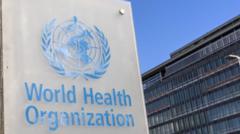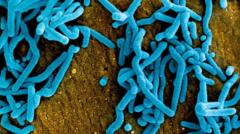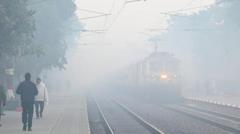Residents of Delhi are grappling with extreme air pollution as the capital experiences dangerously severe air quality levels amidst winter conditions and other contributing factors.
Delhi's Air Quality Declared 'Severe' Amid Toxic Smog Crisis

Delhi's Air Quality Declared 'Severe' Amid Toxic Smog Crisis
As winter sets in, Delhi faces hazardous pollution levels surpassing safe limits by 30-35 times.
Delhi woke up to an unsettling haze as air quality plummeted into severe categories, marking the alarming conditions that have made it the most polluted capital city in 2023 according to a new report. The Swiss Air Quality Index reported that pollution levels in Delhi and its adjacent cities have reached an astonishing 30 to 35 times higher than the World Health Organization's (WHO) recommended safe limits.
During winter months from October to January, Delhi and several northern states traditionally confront hazardous air conditions due to a combination of factors including reducing temperatures, dust, low wind speed, vehicular emissions, and the burning of agricultural residue. This year, experts predict a worsening of the situation in the coming days as pollution levels continued to escalate.
On Wednesday, AQI values in various parts of Delhi soared to the 500 mark, which indicates severe pollution, as particulate matter, or PM 2.5, fills the air. These particulates are known for penetrating deep into the lungs, leading to severe health concerns. According to the WHO, an AQI reading of below 100 is deemed satisfactory for breathing, while levels reaching 400 to 500 are classified as severe. The surrounding cities of Noida and Gurgaon also reported similar levels, contributing to the unbearable smog blanket enveloping the region.
In recent weeks, several northern states have undergone hazardous conditions, with instances of delayed or canceled flights linked to poor visibility. The smog has become so dense that it can be observed from space, with NASA sharing images showing the extensive air pollution covering parts of northern India and adjoining Pakistan.
Health reports have revealed alarming statistics, with an online survey from LocalCircles indicating that 81% of families in Delhi and the neighboring regions reported health issues due to pollution over the past three weeks, and over a third noted purchasing cough syrups during this troubling period.
In response, the Delhi government has enforced a Graded Response Action Plan which aims to restrict activities involving coal, firewood, and non-emergency diesel generators, yet these measures have yet to sufficiently alleviate pollution levels. Residents are also being urged to limit outdoor activities and utilize public transportation to help alleviate the emissions from vehicles.
According to IQAir, India was found to be the third-most polluted country globally, following Bangladesh and Pakistan, with a significant number of its cities grappling with drastic air quality issues. Experts assert that rapid industrialization and inadequate enforcement of environmental regulations have contributed significantly to worsening pollution levels in India. Despite development in recent decades, lax regulations have allowed factories to evade pollution control measures, while extensive construction projects continue to exacerbate the air quality crisis.
During winter months from October to January, Delhi and several northern states traditionally confront hazardous air conditions due to a combination of factors including reducing temperatures, dust, low wind speed, vehicular emissions, and the burning of agricultural residue. This year, experts predict a worsening of the situation in the coming days as pollution levels continued to escalate.
On Wednesday, AQI values in various parts of Delhi soared to the 500 mark, which indicates severe pollution, as particulate matter, or PM 2.5, fills the air. These particulates are known for penetrating deep into the lungs, leading to severe health concerns. According to the WHO, an AQI reading of below 100 is deemed satisfactory for breathing, while levels reaching 400 to 500 are classified as severe. The surrounding cities of Noida and Gurgaon also reported similar levels, contributing to the unbearable smog blanket enveloping the region.
In recent weeks, several northern states have undergone hazardous conditions, with instances of delayed or canceled flights linked to poor visibility. The smog has become so dense that it can be observed from space, with NASA sharing images showing the extensive air pollution covering parts of northern India and adjoining Pakistan.
Health reports have revealed alarming statistics, with an online survey from LocalCircles indicating that 81% of families in Delhi and the neighboring regions reported health issues due to pollution over the past three weeks, and over a third noted purchasing cough syrups during this troubling period.
In response, the Delhi government has enforced a Graded Response Action Plan which aims to restrict activities involving coal, firewood, and non-emergency diesel generators, yet these measures have yet to sufficiently alleviate pollution levels. Residents are also being urged to limit outdoor activities and utilize public transportation to help alleviate the emissions from vehicles.
According to IQAir, India was found to be the third-most polluted country globally, following Bangladesh and Pakistan, with a significant number of its cities grappling with drastic air quality issues. Experts assert that rapid industrialization and inadequate enforcement of environmental regulations have contributed significantly to worsening pollution levels in India. Despite development in recent decades, lax regulations have allowed factories to evade pollution control measures, while extensive construction projects continue to exacerbate the air quality crisis.






















